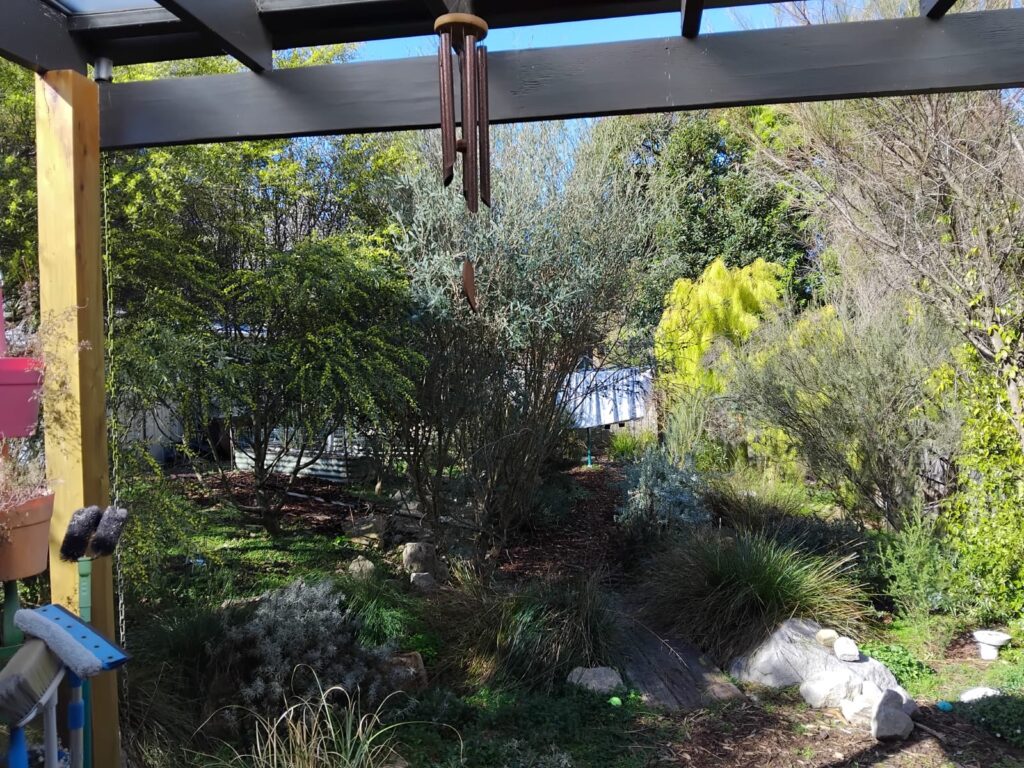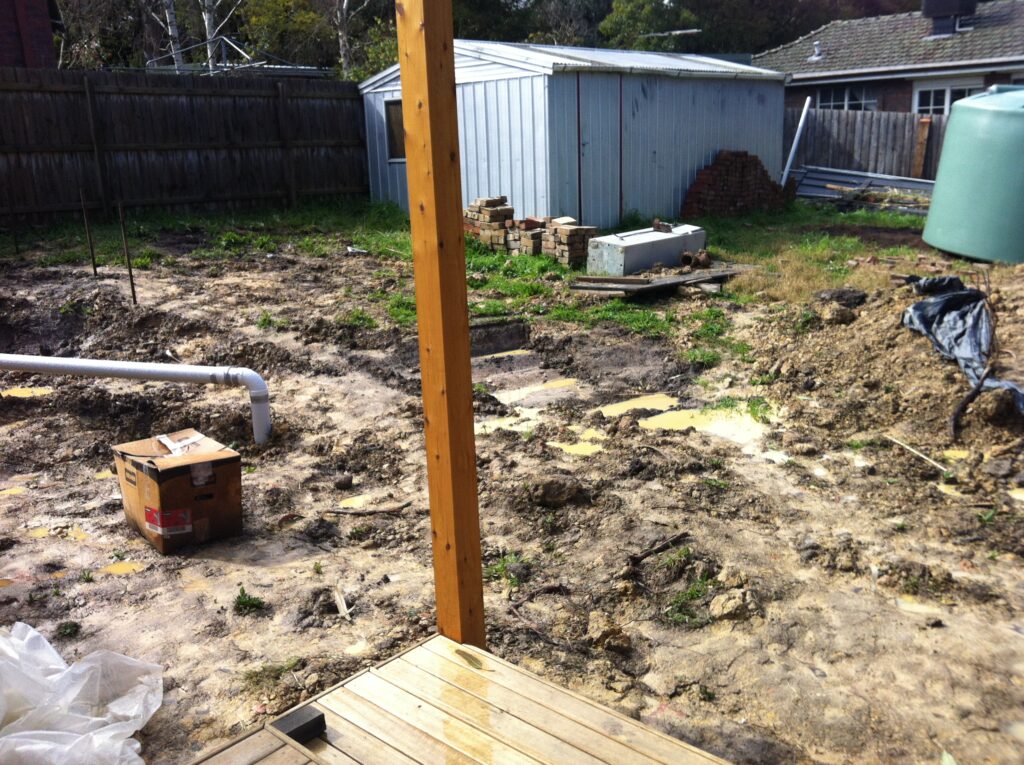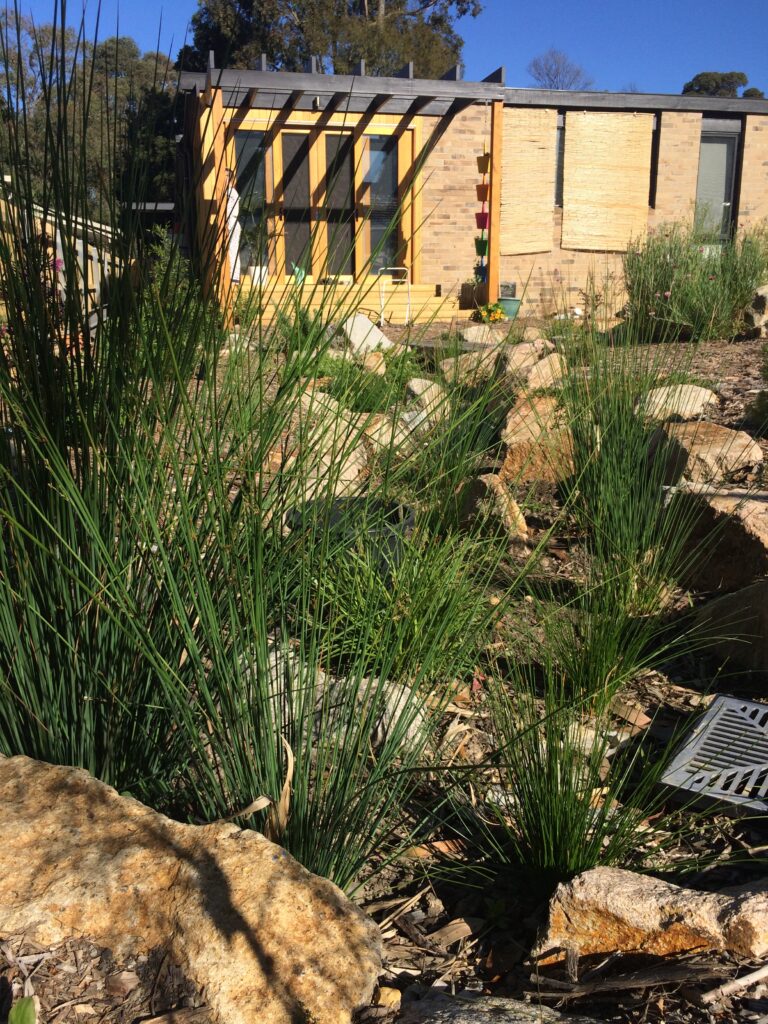Our water, our garden
James in Whitehorse

Today we live with a lush garden,
one I’m glad to be in and happy to show off. It has light in the vegetable beds, shade over the swing chair under the wattle tree, fruitful citrus trees, new gum trees growing to block out the view to the neighbours, ponds for frogs, and lots of indigenous bushes providing food and protection for small birds.
But it didn’t start that way!
The back yard was always a wreck, but renovating the 1970s home required a clean sweep.
The old ceramic sewage and storm water pipelines were blocked, and the pipes run the length of the house to the main pipes under the old laneway at the rear of the house. Viewing portals were not a thing in the 70’s, the pipes could not be clear, and digging the whole thing up from front to rear was the only option.
But the machines scraping the thin topsoil away to the yellow clay was yet an advantage – we’d be starting the garden from something of a blank canvas.

We could plan and create the flow of storm water
The property is on the side of a hill, and the house renovation included updating the roof and guttering,
So thinking about flow, we could design the roof drainage and rear yard landscaping to slow down water flow and hold water on the land, letting water soak into the soil.
- Roof water flows into rainwater tank located uphill.
- The tank overflow drains into an adjacent bowl swale, letting water soak into the soil on the high side of the garden
- The swale overflow drains into a dry creek bed beginning adjacent to the house and flowing away to the rear of the yard, directing water away from the house.
- The dry creek bed ending at the bottom of the garden with an overflow at last connected to the storm water main.

Oh, how our garden grows
The landscaper shaped the land (clay), and provided a top coat of mulch, we planted the garden. The blank slate combined with Gardens for Wildlife – a focus on indigenous species as well as productive plants (lemon, lime, apple, olive, vegetable beds) to encourage native birds and animals. The swale and dry creek bed were planted with reeds and other “wet feet” species
In the first year, we estimate water flowed off the property about four times.
With moist soils plants grew quickly, with established trees growing in a couple of years.
